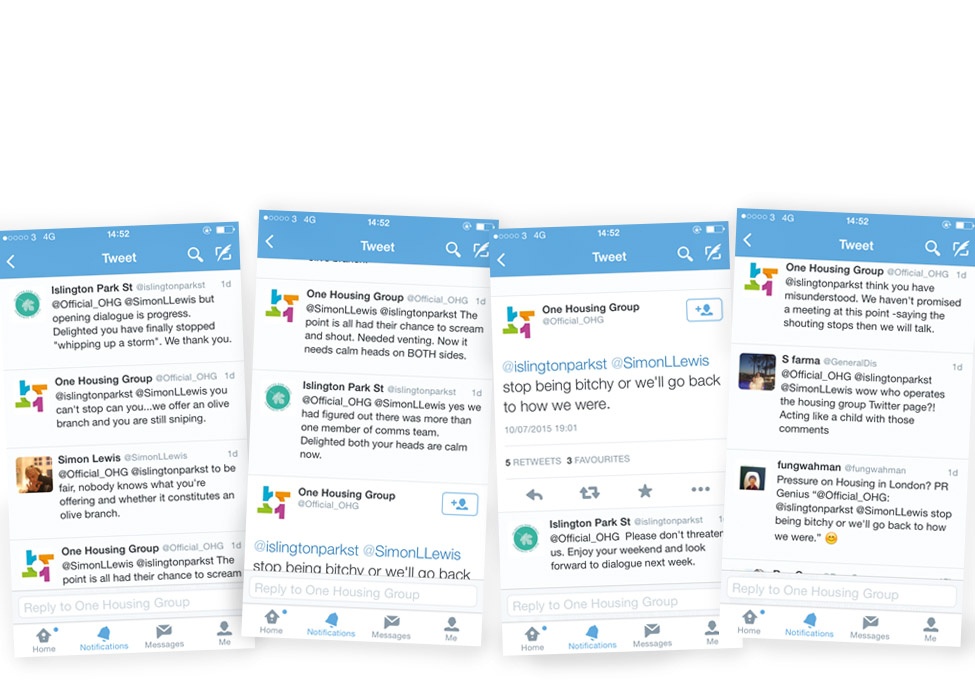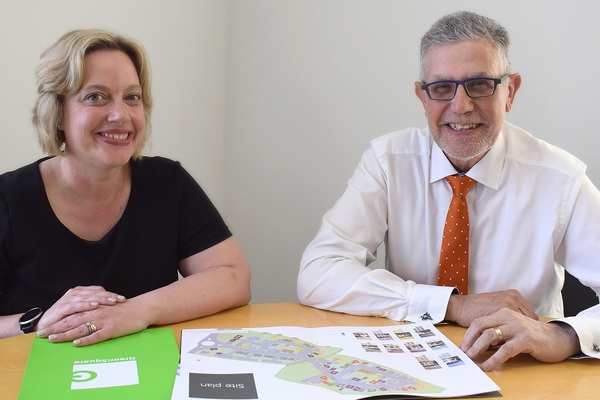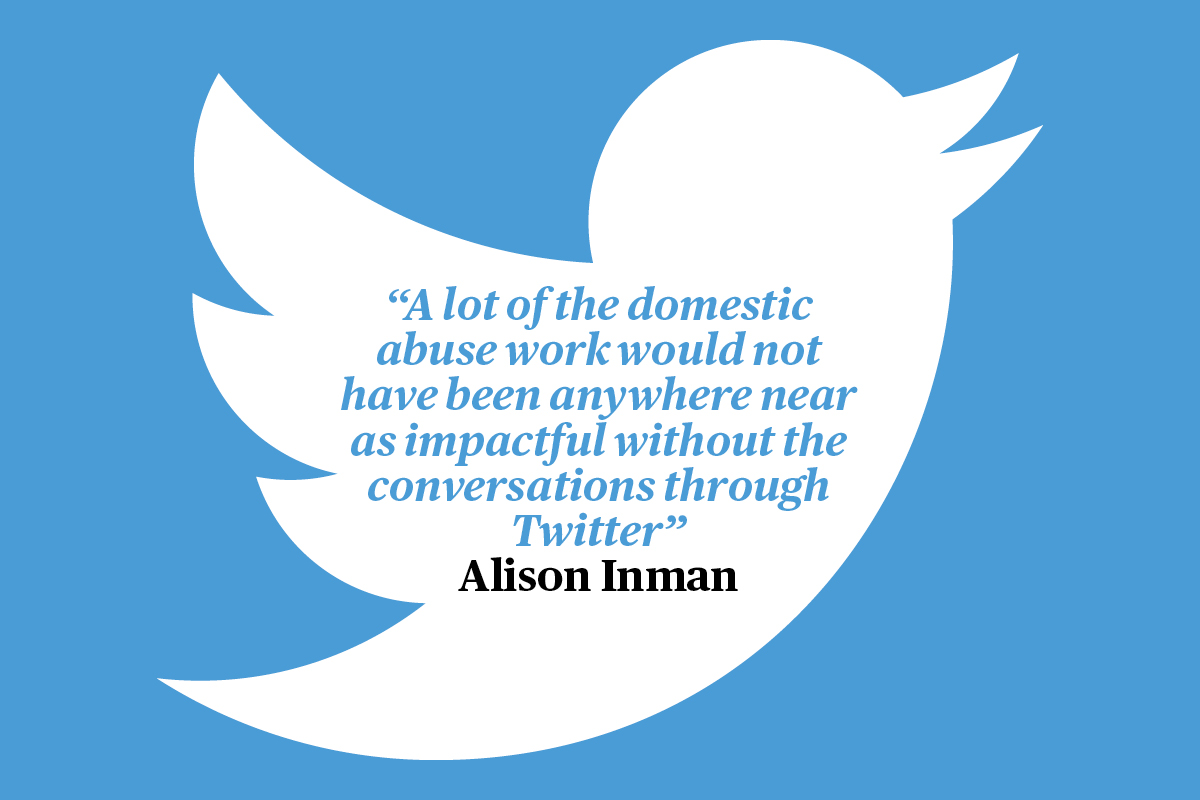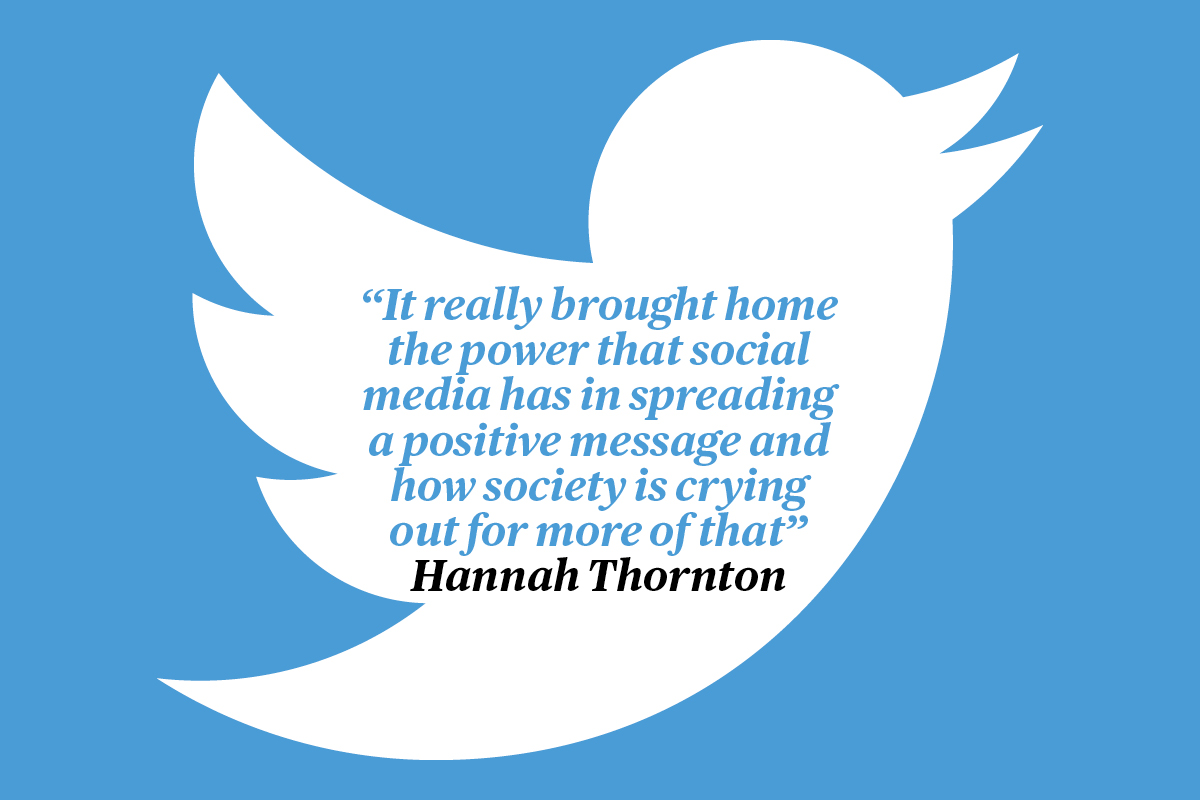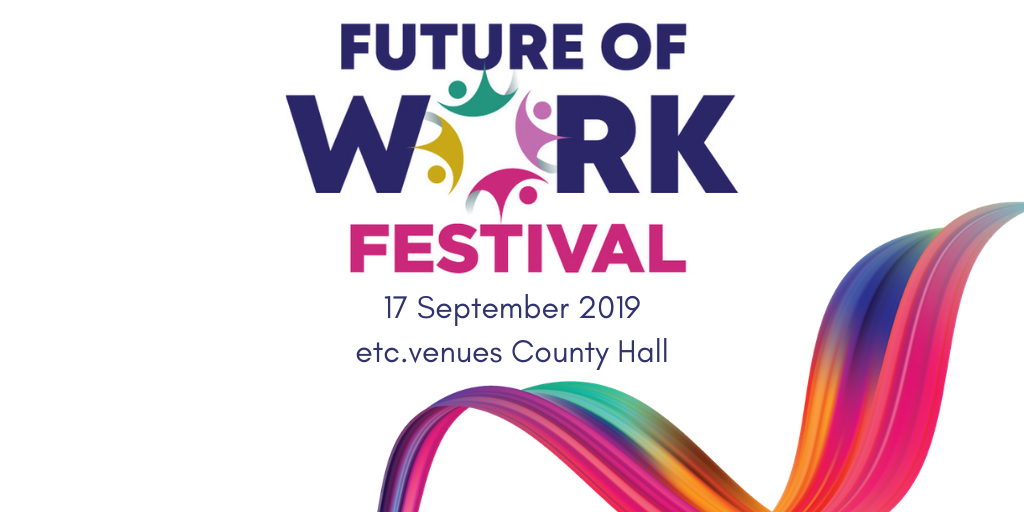You are viewing 1 of your 1 free articles
How can housing professionals get the most out of social media?
Guest editor and Rising Stars competition winner Oliver Harling has commissioned two articles for Inside Housing this week. This one looks at social media – a fact of modern life. But for young housing professionals, it can be a tool for both good and bad. Tim Clark looks for top tips from the sector’s Twitterati
“I learned a valuable lesson very early on – it’s best not to tweet angry or drunk!”
Former Chartered Institute for Housing (CIH) president Alison Inman’s advice will resonate with anyone who has ever developed a Twitter habit. Despite its flaws, many housing professionals now see the social media platform as a vital tool. However, Ms Inman says the Tweets that have the most impact are the more personal ones or those that are part of a campaign.
She says: “I think a lot of the domestic abuse work would not have been anywhere near as impactful without the conversations through Twitter. I will write something on domestic abuse and I will get direct message after message after message from people saying, ‘This is what happened to me.’
A tweet from Ms Inman about the #makeastand campaign:
#PRideMID #PRIDEAwards2018 So proud of the work my @CIHhousing colleagues did on #makeastand No PR Agency, no budget (apart from the badges 🤣) just creativity, hard work, the power of Twitter and the commitment of the housing sector to make everyone #safeathome
— Alison Inman (@Alison_Inman)>#PRideMID #PRIDEAwards2018
— Alison Inman (@Alison_Inman) October 26, 2018
So proud of the work my @CIHhousing colleagues did on #makeastand
No PR Agency, no budget (apart from the badges \uD83E\uDD23) just creativity, hard work, the power of Twitter and the commitment of the housing sector to make everyone #safeathome
“I lost my mum a couple of months ago. It was a horrible time, but the kindness of strangers on Twitter and the messages I received made me think, ‘Gosh, this is important.’”
The fact that Twitter mixes the deeply personal and the professional is one of its most compelling traits.
Inside Housing has spoken to some of the most prominent housing voices on Twitter to ask them to share how the platform has helped them.
Paul Taylor, innovation coach at Bromford housing association’s Bromford Lab, says that housing professionals should see Twitter as a listening tool to help them understand issues in the sector.
He says: “I follow thousands of accounts, many organised into lists, so I can get a sense of what’s going on in innovation, technology, health, housing and the social sector generally. Organisations risk becoming more siloed. While digital connects us in ways never before possible, whole sectors are still just talking to themselves. This sense of disconnection is being made ever more visible – to the public, to patients, to tenants of social housing.”
Paul Taylor uses Twitter to promote content about innovation and new ways of doing business:
Loyal rebels: people who believe in the goals of the organization but are dissatisfied with the way you’re doing things t.co/IYvy3w2TKs - @thedug pic.twitter.com/TYqKm2xkp1
— Paul Taylor (@PaulBromford)Loyal rebels: people who believe in the goals of the organization but are dissatisfied with the way you’re doing things https://t.co/IYvy3w2TKs - @thedug pic.twitter.com/TYqKm2xkp1
— Paul Taylor (@PaulBromford) May 30, 2019
Housing campaigner Rob Gershon joined Twitter in June 2010. While the medium often mixes users’ personal and professional lives, he suggests it is advisable to hold back a little when online.
“Quite often, tweeting feels like a way of disguising corporate communications as something more personal,” he says. “Everyone says ‘be yourself’ or ‘be authentic’ or whatever, but a lot of the time, this would likely just get people into trouble with their employers.”
Deciding how and when to write a personal Tweet or how to structure a campaign to gain interest in an issue can also be a challenge.
“This sense of disconnection is being made ever more visible – to the public, to patients, to tenants of social housing”
Tom Murtha, co-founder of Shout [Social Housing under Threat] and board member of Nehemiah Housing, joined Twitter in October 2012 in part to halt ‘the demonisation’ of social housing. He says: “During my early days, I got into some fairly acrimonious debates about the future of social housing and whether some associations had lost their social purpose. I tend not to do that now. I would say Twitter is not an ideal platform for debate and people should try not to be aggressive in any way. I never swear on any social media.”
Mr Murtha formed Shout in 2014 with Ms Inman, Aileen Evans, the chief executive of Grand Union Housing Group, and housing consultant Colin Wiles. The campaign has been a success, partly because of its social media impact. He says Twitter allows “a small group of people [to] influence so many”.
“I believe Shout owes its success to Twitter,” he adds. “When Shout was established, no housing leader was making the case for government investment in social rent homes. In fact, very few were mentioning social housing at all. Now all housing leaders are making the case.”
Twitter can connect people who would otherwise probably never interact. This, says Mr Murtha, is a key tool that those starting off in housing can use.
He adds: “It [Twitter] provides a non-hierarchical platform where people of all levels can share ideas and debate. We need more executives and non-executives on Twitter.”
He says he tries to follow “all types”, even those who are critical of HAs.
“The problem with Twitter is that unless you do this, you only talk to those who agree with you and reinforce your ideas. We need to get outside the bubble and be challenged, even if it is uncomfortable.”
To some, the most disconcerting aspect of Twitter is how open it can be – how a throwaway post can take off online. So if your Tweet does go viral, what then?
Hannah Thornton, communications and toolkit officer at South Yorkshire Housing Association, joined Twitter in October 2016. In February last year, she posted a Tweet recounting her experience of two men who had met for the first time and had struck up a friendship on the train on which she was travelling.
Ms Thornton wrote a note to the two passengers and tweeted the reply she received from one of them (below). It was an instant hit, attracting more than 39,000 likes, 7,100 retweets and 600 comments.
This time last week I got the train to my Grandma’s and shared part of my journey with 2 lovely men. They’d never met before but instantly hit it off and laughed like they’d been best friends for years. I scribbled a note to them as I got off the train...and I got a reply!!😍🤗 pic.twitter.com/eWA7hiNEim
— Hannah Thornton (@hannah_shefa>This time last week I got the train to my Grandma's and shared part of my journey with 2 lovely men. They'd never met before but instantly hit it off and laughed like they'd been best friends for years.
— Hannah Thornton (@hannah_shef) February 9, 2018
I scribbled a note to them as I got off the train...and I got a reply!!\uD83D\uDE0D\uD83E\uDD17 pic.twitter.com/eWA7hiNEim
She says: “It was incredibly humbling to see this huge community of people and stories and experiences brought together in a way they might not have done otherwise. It really brought home the power that social media has in spreading a positive message and how society is crying out for more of that.”
The Tweet’s response led to global media coverage and an invitation to speak on stage at a Ted Talk. However, it also drew criticism that the post was “manufactured”.
She adds: “In terms of nasty stuff, I think I probably got off really lightly. There was the odd comment, of course, such as, ‘These stories are always manufactured by people who work in comms’, and, ‘Why did she take a photo of the letter?’
“I reminded myself that my original intention had never been to patronise or offend or raise my own profile – it was just about sharing an amazing thing that I was lucky enough to experience, in the hope that it would spread the joy and inspire more people to talk to others they don’t know. Knowing and owning your truth when people start attacking is a helpful way of not going down a spiral of darkness.”
According to Ms Inman, those overseeing a provider’s official Twitter account may also benefit from taking a step back on occasions.
She adds: “I always say to people who are working at housing associations that think they can control what tenants say about them on Twitter, ‘They’re saying that about you anyway – you may as well know about it.’
“Quite a lot of my Twitter activity, for housing stuff, wider welfare reform stuff, is actually done in direct messages – whether that is plotting or sometimes just pointing individuals in the right direction for help”
“[Housing associations] contacting people, asking them to take stuff down, is a bit oversensitive. Social media is like a free consultancy: it’s a free insight and then it’s about using your judgement about what to do about it. You can’t agree with people all the time.”
Mr Gershon says a useful communication tool that can often go unnoticed is Twitter’s direct messaging (DM) feature: “Quite a lot of my Twitter activity, for housing stuff, wider welfare reform stuff, is actually done in direct messages – whether that is plotting or sometimes just pointing individuals in the right direction for help.
“Sometimes, it is boring old ‘networking’ – putting people working on or with experience in various areas in touch with each other. Sometimes, though, my DM conversations are a kind of support system – for me and others.”
Twitter isn’t just for those who are starting out in their housing careers – it can also be an effective tool for senior professionals to reconnect with an audience Mr Murtha, who saw one of his own Tweets (below) garner 5,226 likes and 1,495 retweets, thinks Twitter has helped to redefine him within professional circles.
My eldest brother was born in 1947. He was breeched. There was no medical support and Mam and Dad lived in a cold damp slum. He died at birth. I was born in 1952. I was also breeched. I survived. The NHS and a warm safe council house saved me. I owe my life to the welfare state.
— Tom Murtha (@tomemurtha)My eldest brother was born in 1947. He was breeched. There was no medical support and Mam and Dad lived in a cold damp slum. He died at birth. I was born in 1952. I was also breeched. I survived. The NHS and a warm safe council house saved me. I owe my life to the welfare state.
— Tom Murtha (@tomemurtha) May 30, 2018
“Many of my Tweets are about my family and my early career. I also have a hashtag, #MurthasMenu, which began as a joke but is now quite popular and has a number of followers. I guess people now see me as more than an ageing ex-chief executive because of this,” he says.
For all the addictiveness of Twitter, it is important to keep things in perspective and not allow the social media platform to dominate.
Oliver Harling, Inside Housing’s guest editor for this week and site supervisor at Liberty Group, says: “Be brave, be passionate, ask questions and get involved with what’s going on in the sector today.”
Oliver Harling promoted his trip to the Inside Housing offices on Twitter:
Thanks to @martinhilditch & the team at @insidehousing for making my day so interesting yesterday. Really enjoyed myself.... Look out for my guest-ed this Friday everyone!! 👍🏽📝👀 pic.twitter.com/nHuheiNO9n
— Oliver Harling (@oliverharlingThanks to @martinhilditch & the team at @insidehousing for making my day so interesting yesterday. Really enjoyed myself.... Look out for my guest-ed this Friday everyone!! \uD83D\uDC4D\uD83C\uDFFD\uD83D\uDCDD\uD83D\uDC40 pic.twitter.com/nHuheiNO9n
— Oliver Harling (@oliverharling_h) June 4, 2019
Ms Thornton adds: “The train Tweet went from about 3,000 likes to 17,000 likes on the Saturday night after I’d shared it, but I never checked during that time because I was at a Caribbean fancy dress party wearing a giant pina colada costume.
“Balance is everything!”
Future of Work Festival
New for 2019, Inside Housing’s Future of Work Festival will bring together HR and organisational development professionals from the housing sector to discuss and explore the challenges of how to successfully evolve towards the working environment of the future.
Seize this opportunity to rethink your workforces and workplaces by reconsidering the roles of individuals, organisations, automation technology and how society will approach work.
Assess and benchmark your business strategy with the leaders in the housing sector:
- Defining the Future of Work: what does it look like, what will be the implications, how do you rethink your workforce strategy?
- How to embed Electronic Data Interchange into your workforce, attract the widest pool of talent, be authentic and innovative, keep your workforce happy and productive, and position your brand
- Identifying, assessing and closing the skill gaps: what skills will be required in the future and how do you prepare for the undefined?
- Appealing to and maintaining a multi-generational workforce: how to address differing career aspirations, expectations, behaviours and values
- How best to implement the best tech, for example, big data, artificial intelligence, automation, blockchain and the Internet of Things. How will this change workplace skills and wages? How do you evolve towards a ‘STEMpathetic’ workforce?
- Providing your HR and OD department with the right skills and toolkits to revise talent, organisational structures and business models. Be social and environmentally friendly, and data driven – investing in disruptive tech, skills training and ethical use of tech
- Promoting well-being and employee experience
- Introducing training and learning as part of the career path
- Embracing agile working – understanding how flexible and alternative working arrangements can boost productivity
The festival will take place on 17 September, at Westminster Bridge, County Hall in London.




